How to Use a Multimeter to Test Voltage of Live Wires
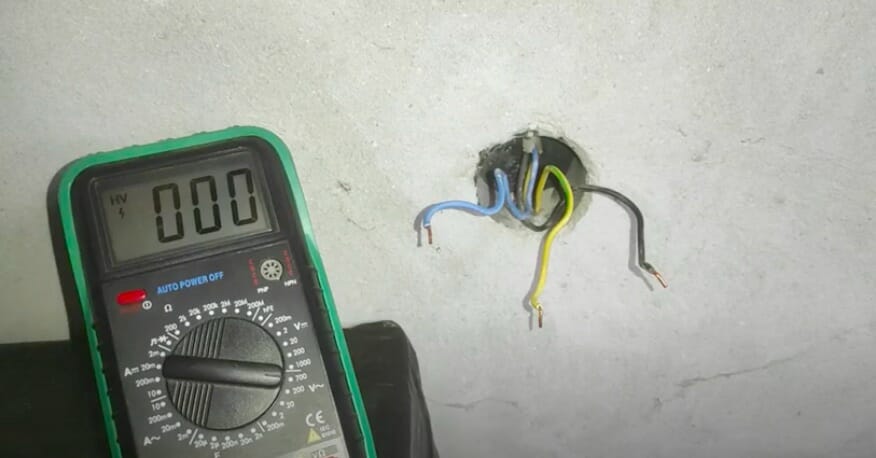
Getting Started
Before I get into it, I’ll go through some of the basics. It is essential to understand the basics to understand the whole process.
A standard multimeter has three parts – a screen, a selection knob & two, three, or more ports. Most multimeter screens come with a four-digit panel. Apart from this, the section knob lets you select the parameter you want to measure & the ports are used to plug in two probes connected to the ground or circuit for testing.
Steps to Use a Multimeter to Test Voltage of Live Wires
Step 1: Safety – The Most Important Thing

A few of the safety issues one needs to take care of while dealing with AC as high as 120 Volts or 220 Volts are:
- Never touch a live wire with your bare hands. Wear an insulating glove even if you plan on fixing or moving the cable.
- Switch the multimeter from DC to AC mode each time you want to measure an electrical value in the AC circuit.
- Start your testing with the highest current range.
- Don’t forget to de-energize & discharge the circuit completely before connecting or disconnecting a multimeter.
- You shouldn’t ever use a Multimeter to apply power to the circuit while measuring resistance.
Important Tip:
To measure Current: Connect the Multimeter in series.
To measure Voltage: Connect the Multimeter in parallel.
Step 2: Set the Parameters
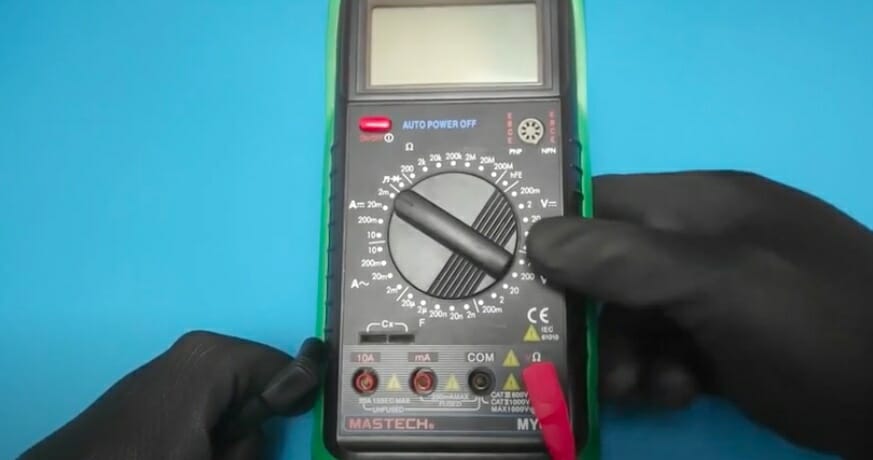
Meters are designed to cater to three different parameters; thus, set the selection knob to Voltage mode when measuring voltage.
To measure AC: Use the part labeled V and a wavy line to measure Alternating Current.
To measure DC: Use the part labeled V and a straight line to measure Alternating Current.
A typical Multimeter measures 200 mV to 600 V AC or DC voltage.
Step 3: Plug in Probes
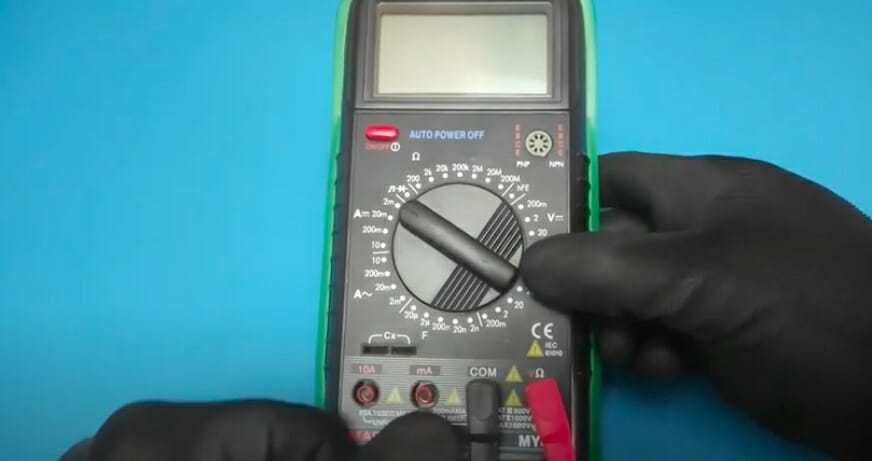
If you are using a three-port multimeter, it comes with the following:
- COM: The common port to measure the negative or ground of the circuit
- mAVΩ: To measure resistance, voltage & current up to 200 mA
- 10A: To measure very high currents
It would be best if you plugged the probes into the correct ports according to what you want to measure.
Step 4: Actual Testing
To ensure proper functionality, test the multimeter on a live wire.
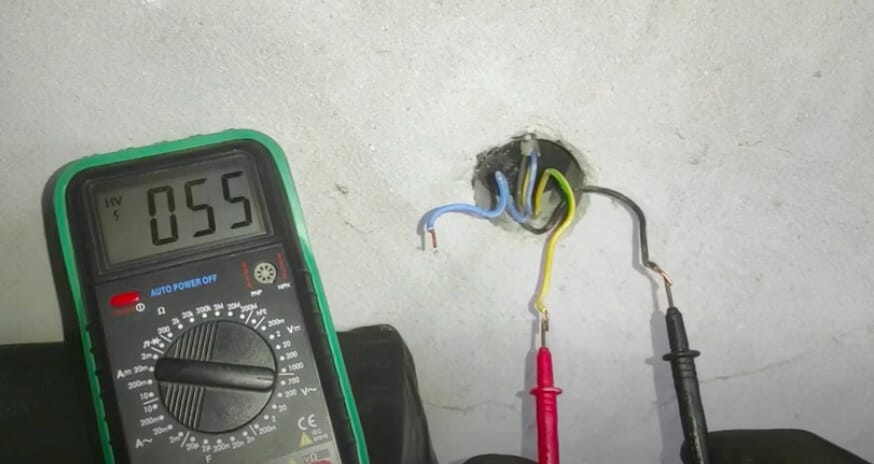
What To Do
1st Approach: Red probe on live cable & black probe on neutral cable. Check the reading.
2nd Approach: Black probe on earth wire and red on Live Wire. You will get the reading.
Are you Getting a Negative Reading?
You might have accidentally reversed the positions of Black and Red probes. Always remember a Multimeter measures live voltage to the common (COM) port. (2)
Step 5: Taking the Reading
When you check a wire through a multimeter, there are two outcomes in terms of readings.
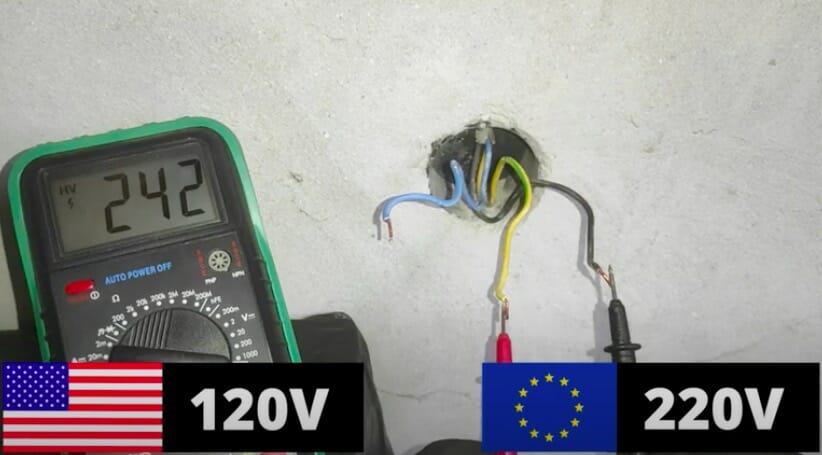
Outcome 1: The fixture is live if the display screen reads 110 and 120 volts.
Outcome 2: If the display screen reads zero, there is no voltage in the wire. In other words, there is no current flowing through the wire.
Live Wire Defined: An electrical wire through which there is a flow of electrical current. A live wire is positive, whereas a neutral wire is negative – having high potential. This differentiates from a neutral wire through the voltage potential.
A typical example is the functioning of home appliances charged with current by the live wire, whereas the neutral wire carries the current back. Live wires are known to have the highest voltages & can prove to be fatal if you come in contact with them directly.
Most electrical circuits provide an Earth wire to protect us from fatal incidents. (1, 2)
We check for the potential difference between live & neutral wires or live & earth wires. It isn’t as tedious and dangerous as it sounds if done right. A multimeter is what makes the process easy & quick.
What is a Multimeter?
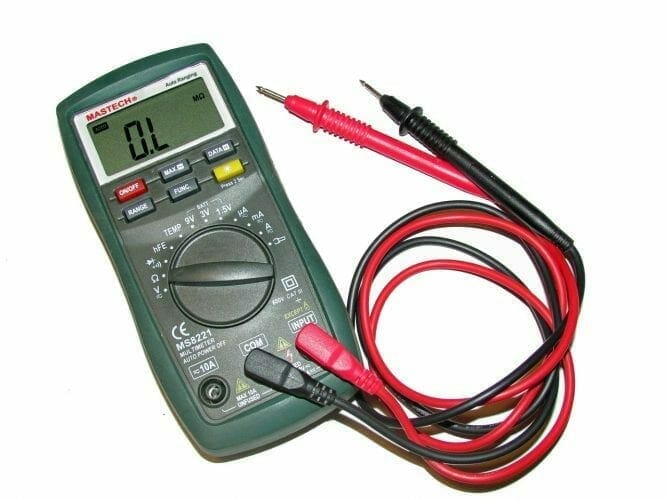
A multimeter is an instrument designed specifically to measure electric current, voltage & resistance over several ranges of value. It is a handy yet versatile tool needed whenever one needs to measure electricity.
Purposely designed, it is an indispensable digital tool that measures Voltage, Ampere & Ohms in wires. Therefore, it is also known as a multi-tester or a VOM (Volt-Ohm-Meter).
Wrapping Up
Electric hazards are extremely dangerous and can result in severe injury or even death; thus, being well aware of the current in the live wire is essential.
This prevents accidental injuries and makes sure you are cautious while handling them. Apart from this, it also helps identify the voltage to diagnose the reason for malfunctioning; thus, the issue can be fixed.
Take a look at some of our related articles below.
- Multimeter Circuit symbol
- How to measure DC voltage with a multimeter
- How to touch live wire without getting shocked
You can check our best multimeter guide to help you decide which one you want.
References
(1) home appliances – https://www.thespruce.com/basic-housewares-for-every-home-1908045
(2) fatal incidents – https://www.nsf.gov/news/speeches/colwell/
rc02_natlsecmtg/tsld001.htm
Video Reference
